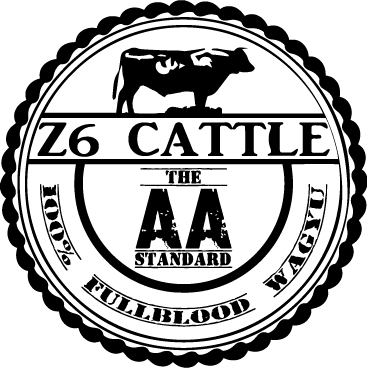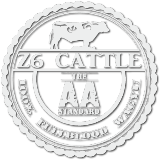There are several genetic conditions in Wagyu that have been recorded in Japan: Chediak-Higashi syndrome (CHS), Claudin 16 deficiency / Renal tubular dysplesia (CL16), Spherocytosis (B3), Factor XI deficiency (F11), Factor XIII deficiency (F13), Bovine Chondrodysplastic Dwarfism (BCD), Marfan Syndrome, Multiple Ocular Defects (MOD), Haemophilia A, Xanthinuria and Epilypsy.
Marfan syndrome has a dominant mode of inheritance. Most of these conditions are found in Black Wagyu. Conditions confined to Red Wagyu (Japanese Brown/Akaushi) are Haemophilia A and Bovine Chondrodysplastic Dwarfism.
Hereditary Conditions in Wagyu Outside Japan
Wagyu have been identified which are affected by, or are carriers of, the following known conditions in Australia:
- CHS (Chediak Higashi Syndrome)
The bleeding disorder in cattle with a light coat colour is caused by an autosomal recessive mutation which is caused by the substitution of a nucleotide on the LYST gene. There is also depressed immunity.Carriers that have been identified from the initial testing of foundation animals are Itomoritaka 002 (J2703, FB681 and IMJFAJ2703), Itoshigefuji TF147 (FB3681 and IMUFQTF147), Mazda (FB103 and IMUFA0103), Mitsuhikokura TF149 (FB3683 and IMUFNTF149), TF601 (FB5999 and IMUFZ5999) and TF603 (FB6188 and IMUFZ6188). - CL16 (Claudin 16 deficiency Type 1)
This condition in Black Wagyu is also called Renal Tubular Dysplasia and is a lethal autosomal recessive condition. Kidney failure and retarded growth are caused and can be associated with overgrown hooves and diarrhoea.Type-1 mutation is caused by a 37kb deletion and the more recent Type-2 mutation is caused by a 56-kb deletion.The frequency of the CL16 deficiency mutant gene in Japan is 0.1. Foundation animals Yasufuku Jr (FB5061 and PEDFS100), JVP Yasutanisakura 931 (FB2102 and IMUFN2102) and Kimifuku TF726 (FB7584 and IMUFB7584) are known to be carriers of CL16. - B3 (Spherocytosis)
Low birth weight is followed by laboured breathing from moderate anaemia with spherocytosis, retarded growth and acidosis. It is lethal and death usually occurs within ten days after birth. If survival goes beyond that, adulthood is often reached despite retarded growth. A CGA to TGA substitution and Arg to Stop mutation is the cause of dominantly inherited spherocytosis.The frequency of Spherocytosis mutant gene in Japan is 0.04. Foundation bull, and AI approved sire, JVP Yasutanisakura 931 (FB2102 and IMUFN2102) is the only known carrier of B3 to have been confirmed in Australia. He has 123 progeny which have been registered by AWA (Australia) and 92 by AWA (USA). - F11 (Factor XI deficiency)
Factor XI deficiency is encountered in Wagyu and Holstein. There are similarities in the clinical symptoms in the breeds. The causative insertion mutations are on different locations of the F11 gene and these variations are considered to be responsible for the differences in severity between the breeds.Factor XI deficiency in Wagyu has an autosomal recessive mode of inheritance and is caused by an insertion of 15 nucleotides in exon 9 of the F11 gene. Frequencies of the mutated gene were found to be 26.4% from a random sample in Japan. No affected homozygous animals exhibited any symptoms.A laboratory trial involving a few animals in Australia indicated that bleeding time in the laboratory was 65% slower in affected animals when compared to carriers. The owner of the affected animals advised that they did not show any symptoms.Tests carried out in Australia and USA have identified both Red and Black Wagyu have the Factor XI deficiency. This implies that the F11 mutation in Wagyu occured before the segregation into Black and Red breeds. Foundation animals that are carriers for F11 are: Hikari (FB2455 and IMUFN2455), Itohana 2 TF38 (FB2294 and IMUFN2294), Itoshigenami TF148 (FB3682 and IMUFQTF148), JVP Fukutsuru 068 (FB2101 and IMJFMJ068), Kimifuku TF726 (FB7584 and IMUFB7584), Kitateruyasu 003 (FB686 and INJFAJ2810), Shigemaru (FB2124 and IMUFN2124), TF601 (FB5999 and IMUFZ5999) and JVP Yasutanisakura 931 (FB2102 and IMUFN2102).Factor XI deficiency was documented in Holsteins in 1969. Affected animals take a longer time for blood to coagulate after injury or there is bleeding that doesn’t stop from the umbilical cord after birth. Blood has been observed in cow’s milk and this led to the diagnosis of this condition in Europe. The blood coagulation effect was found to be severe in affected homozygotes and partially deficient in heterozygote carriers. Reports from 1995 suggested effects on reproductive performance with a 50% greater incidence of repeat breeding of affected animals. A 76-base insertion mutation to exon 12 of the F11 gene is the cause. A heterozygote cow was the first Holstein to be isolated with the condition in Japan.
Control of Hereditary Conditions
A few high performers are carriers of hereditary conditions and the heavy use of artificial insemination and line breeding has resulted in the spread of some of these conditions from foundation animals. Carriers were exported from Japan and then on to other countries before their recessive genetic status was known. A table showing results from tests of Foundation animals up to 26th February 2011 is on the American Wagyu Association website.
Now that these conditions have been recognised and carriers and affected animals have been identified, related animals that may be at risk can be tested and identified too. It is becoming standard practice for all breeding animals to be tested before they or their genetics is offered for sale or export. Most importing countries mandate it now.
GeneProb software applies the results from tests across the pedigree database and the probabilities that animals are carrying any of the four genetic conditions is available. At-risk animals can be identified and decisions can be made to see if any further testing is required. When an animal has a probability of 50% or higher for one condition, it has at least one parent that has been tested to be a carrier of that condition, or else one of their progeny has been found to be a carrier. Previously this information was only available on a herd by herd basis.
Carriers with superior breeding can be retained but they should not be mated to other carriers. Their progeny that are tested to be free can be safely retained for breeding or sale.
References
American Wagyu Association Animal Database
Inherited Genetics Disorder Test Results for AI Sires Tested as of 2-26-2011
Australian Wagyu Association Animal Database
Australian Wagyu Association. 2012. Managing recessive genetic conditions in Wagyu in Australia. Australian Wagyu Update, Edition 51:3.
Ghanem, M.E., Nishibori, M., Nakao, T., Nakatani, K. and M. Akita. 2005. Factor XI mutation in a Holstein cow with repeat breeding in Japan. J. Vet. Med. Sci 67(7):713-715.
Hirano, T., Hirotsune, S., Sasaki, S., Kikuchi, T. and Y. Sugimoto. 2002. A new deletion mutation in bovine Claudin-16 (CL-16) deficiency and diagnosis. Animal Genetics 33:118-122.
Inaba, M., Yawata, A., Koshino, I., Sato, K., Takeuchi, M., Takakuwa, Y., Manno, S., Yawata, Y., Kanzaki, A., Sakai, J-i., Ban,A., Ono, K-i. and Y. Maede. 1996. Defective anion transport and marked Spherocytosis with membrane instability caused by hereditary total deficiency of red cell Band 3 in cattle due to a nonsense mutation. J. Clin. Invest. 97(8):1804-1817.
Kunieda, T. 2005. Identification of genes responsible for hereditary diseases in Japanese beef cattle. J. Anim. Sci. 76:525-533.
Ohba, Y., Takasi, M., Nishii, N., Takeda, E., Maeda, S., Kunieda, T. and Kitagawa, H. 2008. 2007. Pedigree analysis of Factor XI deficiency in Japanese Black cattle. J. Vet. Med. Sci. 70(3):297-299.




